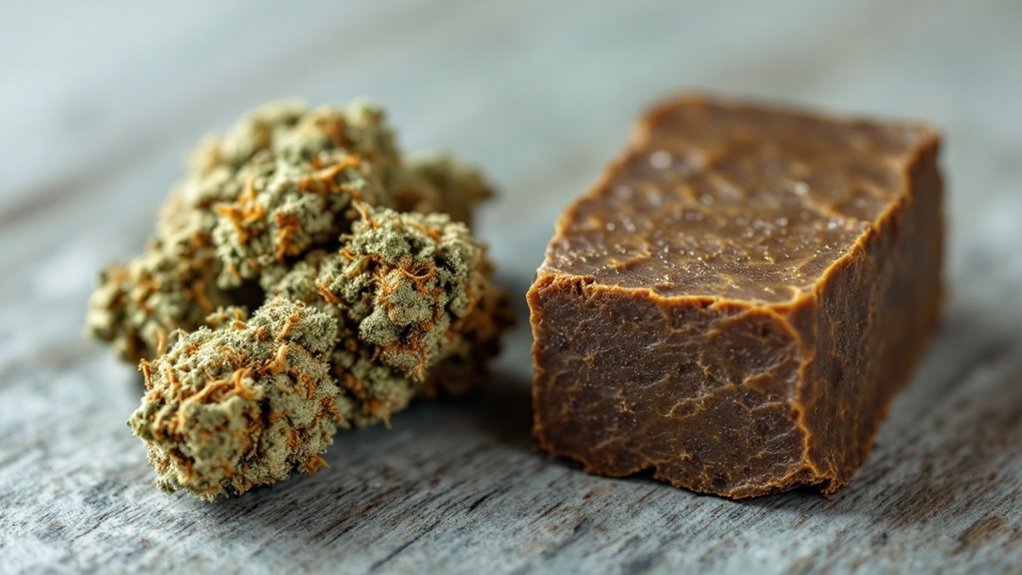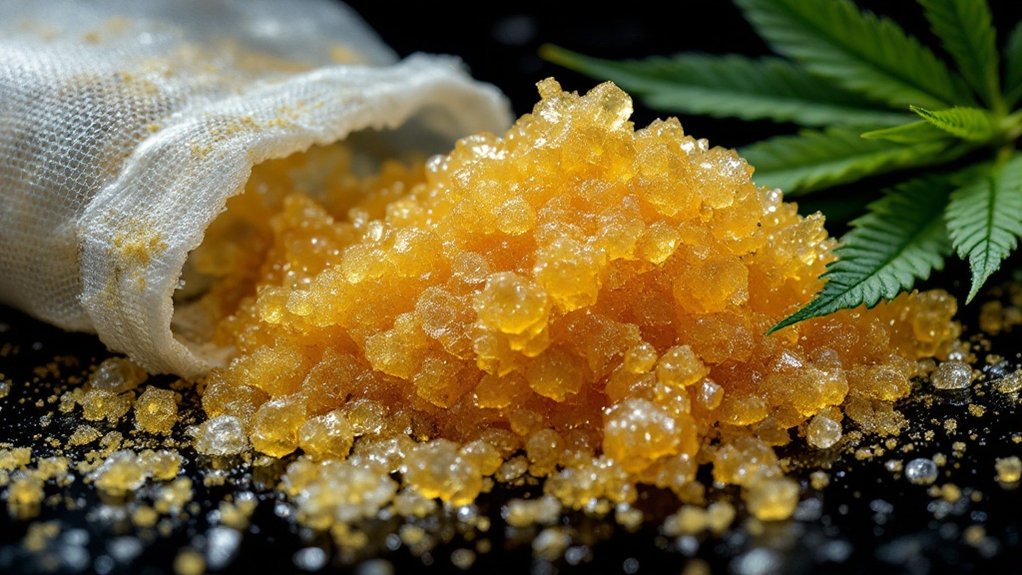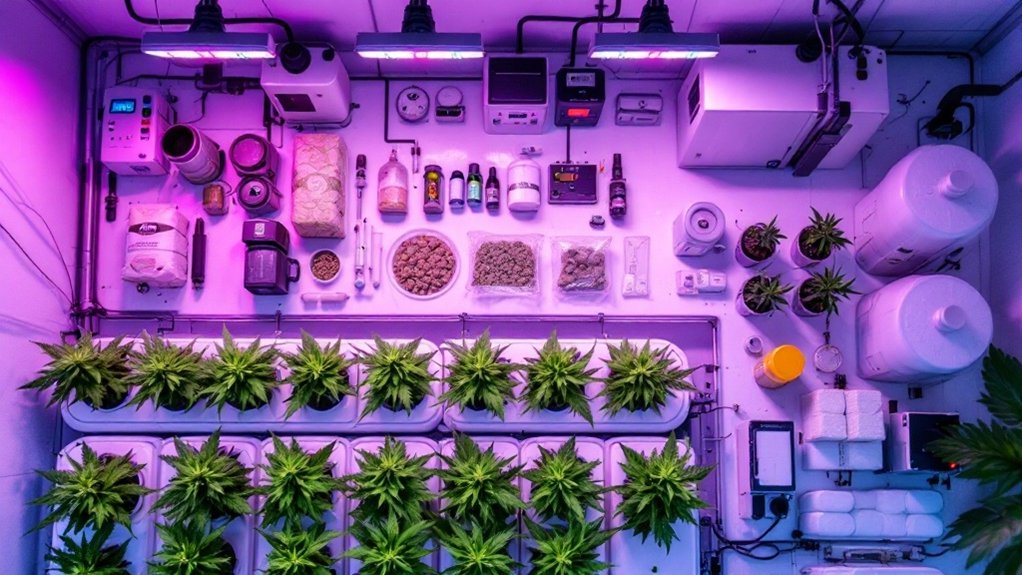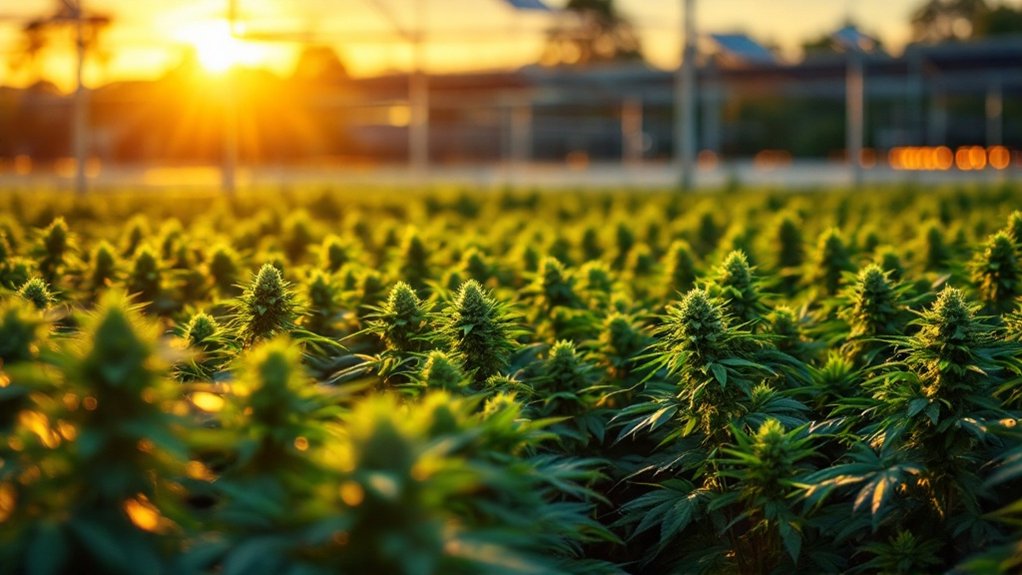Hash is a concentrated form of cannabis made by collecting and compressing trichomes, the resin-producing glands of the cannabis plant. Unlike traditional cannabis flower, hash contains considerably higher levels of THC, typically 20-60% compared to flower’s maximum of 25%. This concentration gives hash a distinctive brown, waxy appearance and produces more intense effects when consumed. The production process transforms cannabis resin into a potent substance with varied consistencies and enhanced therapeutic potential.

Hash, a concentrated form of cannabis, represents one of the oldest and most potent cannabis derivatives known throughout human history. It is specifically defined in the 1961 UN Single Convention on Narcotic Drugs as “the separated resin, whether crude or purified, obtained from the cannabis plant.”
The ancient art of hash production transforms cannabis resin into one of humanity’s most concentrated botanical preparations.
This cannabis concentrate is produced by collecting and compressing trichomes, which are fine growths on cannabis plants that produce a sticky resin rich in cannabinoids. The mature female plants contain the highest concentration of these valuable trichomes. The resulting product typically appears as a brown, waxy substance, though its color can vary from transparent to yellow, black, or red depending on the production method. Hash is considered one of the most popular forms of cannabis concentrates due to its longstanding history and potency.
The fundamental difference between hash and traditional cannabis flower lies in its concentration of active compounds. Hash contains the same cannabinoids found in cannabis, primarily tetrahydrocannabinol (THC), but in considerably higher concentrations. While confiscated hashish in Europe around 2011 showed purities ranging from 3% to 15%, modern versions likely contain much higher levels of THC, considering that contemporary cannabis flowers can reach upwards of 25% THC by weight.
This increased potency places hash alongside other concentrated forms such as sinsemilla and hash oil. The consistency of hash can range from brittle to malleable, depending on the processing techniques and the amount of plant material remaining after extraction. Hash can be found in solid form as compressed blocks, processed into hash oil, or incorporated into edible products. Its potency typically ranges from 20% to 60% THC, making it significantly more concentrated than regular cannabis flower.
Various colloquial names for hash and similar marijuana concentrates include boom, gangster, wax, shatter, and dabs, among others. Users of hash typically experience more intense effects than with standard cannabis due to its concentrated nature. These effects may include euphoria, relaxation, heightened sensory perception, elevated mood, altered time perception, and increased appetite.
However, the potency of hash means that novice users might experience unpleasant effects such as paranoia or panic if not accustomed to concentrated THC levels. From a medical perspective, hash offers valuable therapeutic potential due to its concentrated form. Under proper medical direction, hash can provide regulated effects for various treatment purposes.
The same therapeutic compounds found in cannabis are present in hash, making it increasingly popular for medicinal applications as new product derivatives continue to emerge in the global market.
Frequently Asked Questions
How Long Does a Hash High Typically Last?
A hash high typically lasts between 2-4 hours for most users, though this duration varies based on several factors.
The concentrated cannabinoid content in hash produces more intense effects than traditional marijuana.
Individual metabolism, consumption method, hash potency, and personal tolerance greatly influence the experience length.
Some users may experience residual effects for up to 24 hours, particularly with high-potency products or larger consumed quantities.
Can Hash Be Detected in Drug Tests Longer Than Cannabis?
Hash can indeed be detected in drug tests for longer periods than standard cannabis due to its considerably higher THC concentration.
When consumed, hash introduces more THC-COOH metabolites into the body, which are stored in fat tissues and eliminated more slowly.
While occasional users of either substance may test positive for 3-7 days, frequent hash users can potentially test positive for over a month, particularly in urine tests, compared to the typically shorter detection window for cannabis.
What’s the Shelf Life of Properly Stored Hash?
Properly stored hash typically maintains its potency for 1-2 years, though its shelf life depends on several environmental factors.
Heat, light, and oxygen exposure accelerate cannabinoid degradation, while cold, dark, and airtight conditions preserve its qualities.
Over time, terpenes evaporate first, altering flavor and aroma before potency diminishes.
Premium hash with higher cannabinoid concentrations generally degrades more slowly than lower-quality preparations, especially when stored in vacuum-sealed containers below room temperature.
Is Hash Legal in Countries Where Cannabis Is Decriminalized?
In countries where cannabis is decriminalized, hash typically falls under the same legal framework, though important distinctions may exist.
While decriminalization generally applies to both products, hash—being a concentrate with higher THC content—sometimes faces stricter regulations.
Legal treatment varies considerably between jurisdictions, with some regions explicitly including hash in decriminalization policies while others maintain separate classifications based on potency.
Enforcement practices often differ from written law, creating a complex legal landscape for cannabis derivatives regardless of form.
Does Hash Production Waste Any Part of the Cannabis Plant?
Hash production typically utilizes nearly all trichome-bearing parts of the cannabis plant.
Modern extraction methods, particularly bubble hash and dry sift techniques, focus on collecting the resinous trichomes while leaving behind fibrous plant material. This plant matter, though containing minimal cannabinoids, represents the main “waste” component.
However, many producers have developed efficiency improvements like specialized screening methods and freezing techniques that maximize trichome collection, ensuring minimal valuable compounds are discarded during processing.









